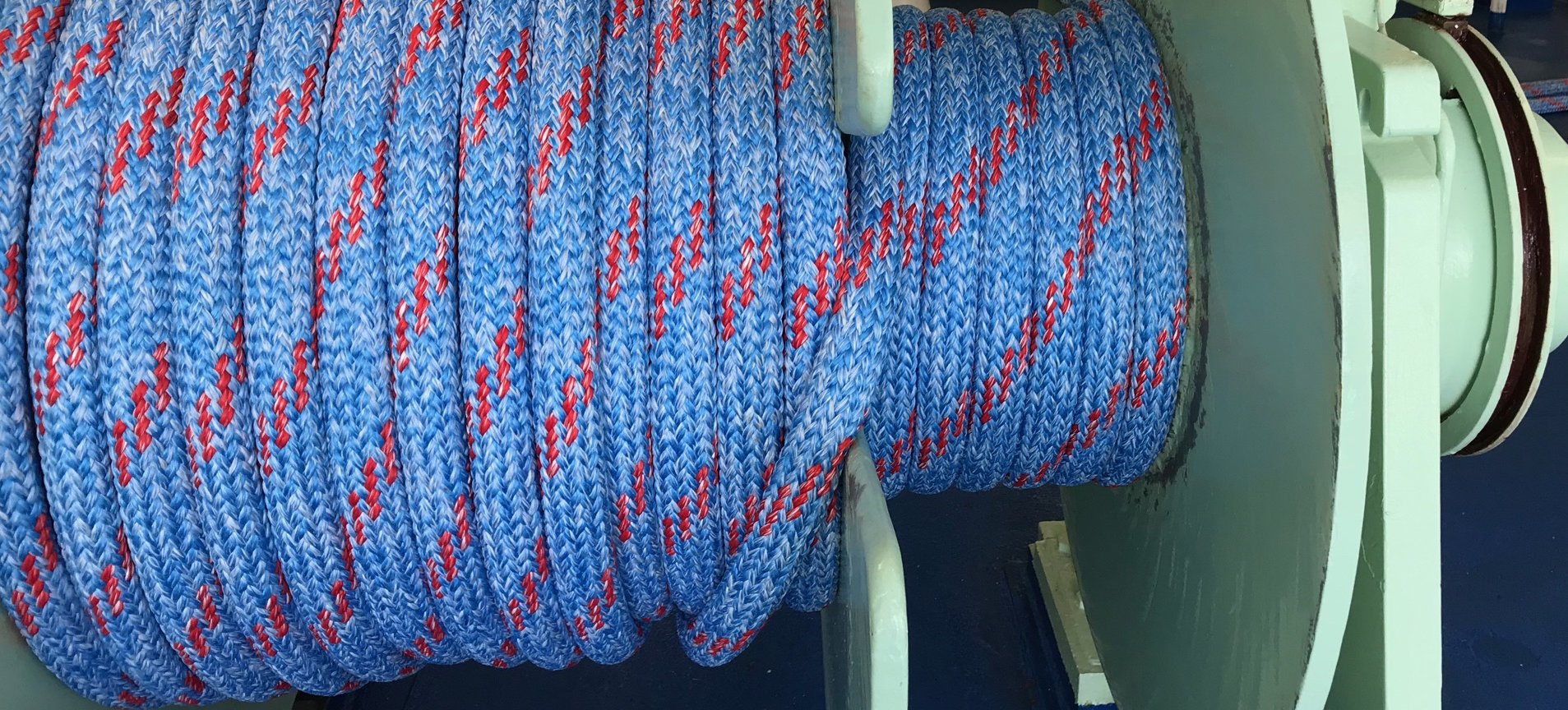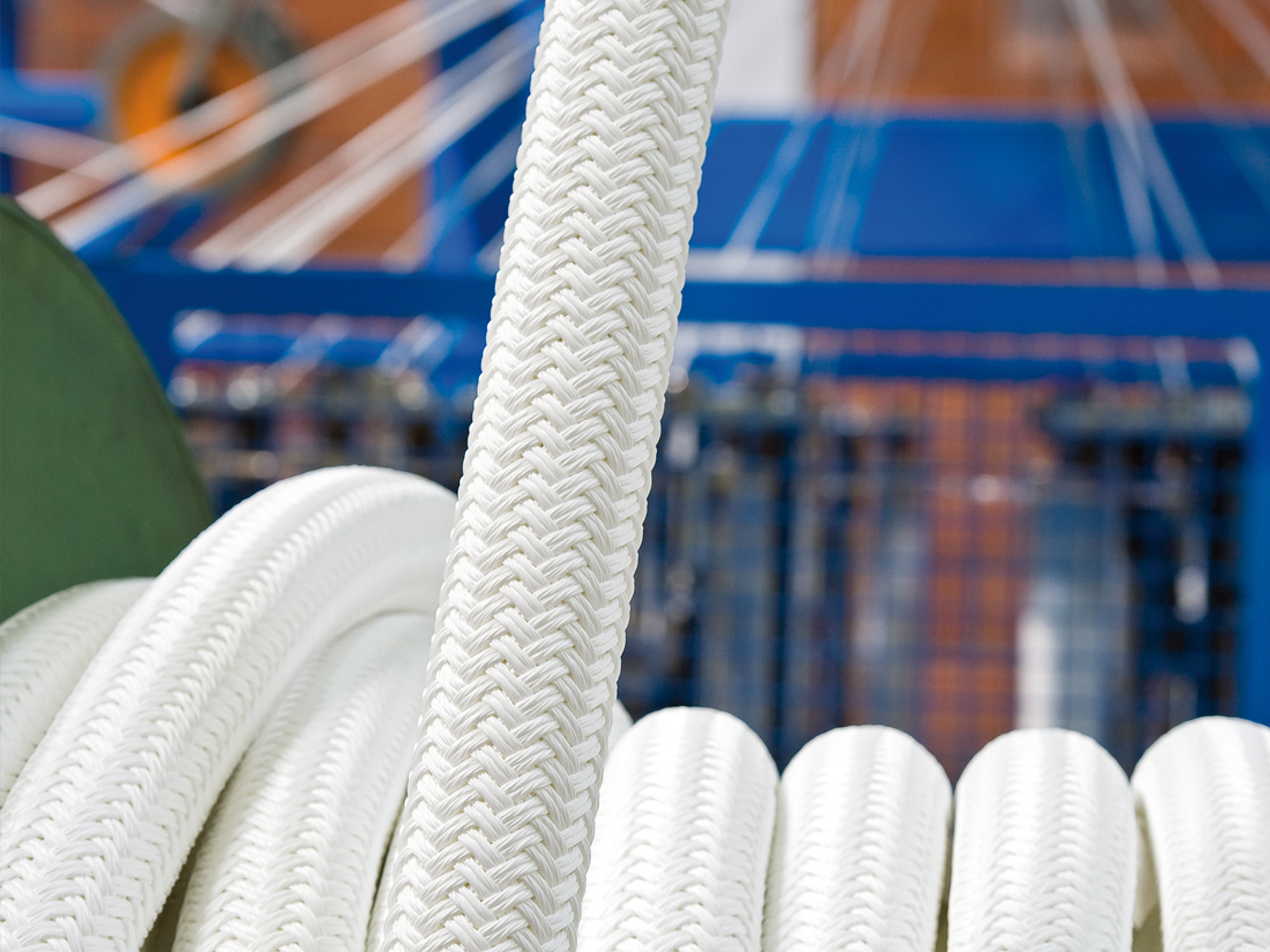
Safety counts
Care, maintenance and safety instructions for man-made fibre ropes
- The break load values were measured on samples of new products and laboratory conditions. The use of the rope and weathering cause a drop of break load.
- Weight is measured according to EN 919:1995. A change in the weather conditions (e.g. moisture/drought) may cause weight differences.
- No responsibility is taken for the correctness of this information.
- Neither Gleistein nor its suppliers will under any circumstance be liable for any damage arising out of the improper use of the product. Any use of the product violating the following prescriptions at any time will be considered improper and inappropriate.

A. Some essential “Dos” and “Don'ts”.
- Ensure before use that the rope's are in good condition.
- All suggested rope sizes are designed such that the load presents not more than 1/5 of the ropes break load. Bear in mind that shock loads can result in a severe loss of break load.
- The radii of rope bends should fit the specific characteristics of the raw material used in the rope.
- Bends and hitches in ropes significantly reduce their strength.
- Do not drag ropes over sharp edges.
- Avoid scoring of the rope at guiding elements. All metal parts should be smooth and chaffing points protected by leather, plastic or canvas parceling, or by worming with small sized ropes.
- Avoid exposure to all forms of heat. Avoid unnecessary exposure to the degrading influence of strong sunlight.
- Avoid contamination by chemicals or fumes. If contamination is suspected, wash man-made fibre ropes in cold running water e.g. by hosing.
- Avoid build-up of excessive turns in ropes. If this condition has occurred, loops will form, and, if loaded, strand distortion and loss of strength will result. Work excessive twists over the end of the rope before straining.
- Ropes should always be correctly coiled, reeled and stowed. Ropes running on winches should be pulled off tangentially to avoid kinks or bends.
- If the rope is delivered on a reel, mount the reel on trestles and unreel with the rope coming from underneath the reel.
- If you are not sure about the condition of a rope please contact the manufacturer or professional experts.
B. Damage to the ropes
1. Damage due to external wear
- In the extreme the strands become so worn that their outer faces are flattened and the outer yarns severed. If the predominant part of the yarns are damaged the rope should no longer be used.
- If one strand of a twisted rope is completely broken, the rope has to be exchanged.
- Assessment of the degree of wear is by observation of the number of severed yarns, and the thickness relationship of the un-severed yarns at the abraded and un-abraded sections.
- A tensile test of one section of the rope will remove any doubts about the rope’s condition.
2. Damage due to local abrasion
- This may be caused by the passage of the rope over sharp edges whilst under tension, and such damage can result in serious strength losses, particularly if, for example, a deep score is produced in the rope.
3.Internal Wear
- Internal wear can be detected by the tell tale signs of a loosening of strands and the presence of powdered fibre.
- It is most often caused when grit becomes trapped in a rope which is repeatedly flexed in wet conditions.
4. Overloading
- An overloaded rope may be difficult to detect, and a tensile test is invaluable. Check measurements over markers on the rope may reveal local excessive stretch due to overloading, and some hardening of the rope may be observed with a reduction in diameter and considerable reduced extension under load.
5. Chemical attack
- This may be revealed by staining or by ease of plucking or rubbing off filaments or fibres from the yarns.
- If the this is the case the rope must be replaced.
6. Attack by heat
- In extreme cases local fused sections indicate heat through friction and a considerable loss of strength can be expected.
- This may be revealed by glazing of the rope surface.
- If, after careful visual examination, doubts still exist, discard the rope or consult the rope manufacturer.
C. Routine Inspection
- Rope strengths may decrease every year by up to 30% through exposure, depending upon the raw material and the colour.
- Regular inspection of ropes is a worthwhile exercise, as the life can be extended considerably by proper repair and protection at obvious chafing points
- It must be emphasized that no matter what agency has weakened the rope, the effect will be more serious on smaller sizes than on larger sizes of rope.
- Examination of about 300 mm of rope at a time is recommended, the rope being turned to reveal all sides before continuing. At the same intervals, the strand should be opened as in splicing, but only sufficiently to allow examination of the inside bearing surfaces.
D. Maintenance after inspection
- Cut out local damaged sections if warranted, using short butt splice. Do not wait for a damaged section of the rope to part under strain, as the recoil effect can disturb the lay of the rope over a considerable length. Any rope which has broken through overload should be discarded.
- If thimbles are loose in the eyes, due to rope stretch, readjust the splice. Never allow a thimble to become so loose that it can rock. Have all splices properly served or taped, and dogs firmly seized. Do not allow any tuck to become undone: every tuck is necessary for the optimum splice efficiency in all constructions of rope.
- Never dry any fibre rope by use of heat. If possible, store ropes in a cool, dry, well ventilated store or locker, preferably on pallets or festooned.
E. Safety tips
- Never stand in rope loops.
- Ropes under strain are always a risk to their environment and to people standing close to them. Therefore ensure that nobody stands close to a rope under strain. Overloaded man-made fibre lines can part abruptly with little warning. The subsequent energy release and lash back can cause serious injury. Fittings are always dangerous; they can be torn away by heavily loaded ropes and increase the risk of accident.
- In preference always use stoppers on the double.
- Ropes are made to be used, not abused. Abuse of ropes leads to short rope life and possible danger to the user.
- Remember to look after your ropes …
Your life may depend upon them!


